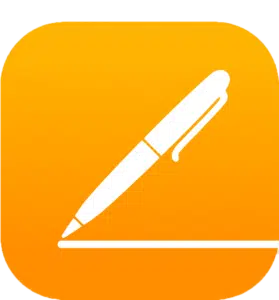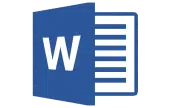Do you know it takes recruiters only six to ten seconds to decide whether or not to keep your curriculum vitae? That’s if it even makes it through the filtering system.
However, you can improve your curriculum vitae’s first impression by not underselling yourself or assuming the hiring manager will read between the lines. You ought to be forthright and confident in describing yourself and what you can do.
So, whether you’re looking to revise an existing CV, create a fresh one, or wondering, what is a CV? We have the answers you’re looking for.
What Is a CV?
A CV or curriculum vitae is a document that summarizes your educational and professional background. People use CVs to apply for jobs or educational opportunities.
It includes work experience, publications, awards, education, and other relevant achievements. It’s a comprehensive overview of what renders you an expert in your field.
What Is a CV for a Job?
A CV for a job is typically used for job applications but also serves as a marketing tool for professionals looking to make a career change.
It includes details about relevant internships, employment history, educational background, critical skills, accomplishments, awards, and other information showcasing abilities relevant to the job you’re applying for.
What Is a CV for University?
A CV for a university is essential when applying for admission to a university bachelor’s, master’s, or doctoral degree. It outlines your education, skills, and awards, confirming that you’re the best candidate for the program. You may include any relevant work experience or extracurricular activities.
Why Is It Called a CV?
The term CV stands for curriculum vitae and is derived from Latin, meaning “the course of my life.” A CV’s ultimate goal is to secure a job interview with the hiring organization.
You must make the CV easy to read and focus on the most applicable information to the position.
Why Is a CV Important?
A CV is essential because it’s the first impression potential employers and recruiters have of you. A curriculum vitae could mean the difference between getting an interview or being passed over for the job.
It allows employers to gain insight into the most relevant aspects of your experience and qualifications. It will enable you as a job applicant to demonstrate your value to employers and prove your worth as a candidate.
Types of CVs
Whether it’s your first CV or updating an old one, you should consider the format you’d like to use. That’s usually dependent on your experience, specific situation, field, and personal preferences. Here are the two common types of CVs:
1. Chronological CV
It’s the most standard format for a curriculum vitae and what most recruiters anticipate seeing. A chronological CV lists work experience in reverse chronological order, with the most recent position coming first.
It’s ideal for individuals with previous work experience seeking to showcase their expertise working on projects. Generally, a CV might span the last 10 to 15 years or detail your previous 5 to 6 roles.
2. Skills-Based CV
The format emphasizes your skills and expertise rather than providing a chronological account of your employment history.
Whereas it’s not as common as the chronological CV, a skill-based CV may be more suitable for your situation if you’ve never had a job before, have gaps in your job history, or looking to switch professions.
CV Comparisons
When submitting a job application, your CV, resume, and cover letter give you a chance to make a good impression on the hiring manager. Here’s what differentiates them:
What Is a CV vs a Resume?
A CV is not the same as a resume. A resume is a one to two-page document highlighting your relevant experience and qualifications for a particular position.
However, a CV entails comprehensive accounts of your academic education, research, publications, and presentations.
They also differ in geographic location. For instance, a CV and a resume are separate documents with unique functions in the United States. In contrast, employers in the United Kingdom avoid the term resume altogether and describe both resumes and CVs using the term CV.
What Is a CV vs a Cover Letter?
A cover letter differs from a CV because it’s shorter and less comprehensive than a CV.
A cover letter is a shorter document, usually one page, expressing interest in the position you’re applying for. A cover letter format consists of a header, introduction, body, and closing.
On the other hand, a CV may be several pages and offers detailed information about your education and employment history. It also includes any accomplishments or awards you may have achieved throughout your career.
What Should I Put On My CV?
Here are the typical contents of a CV.
- Contact Information: You should have your full name and contact details, including telephone and email, at the top of the CV.
- Summary or Objective: Use this section to state why you’re interested in the job and what qualifications or skills you bring to the table.
- Work Experience: Under this section, list your work history, including current and past employers, job titles, dates of employment, and a brief description of each role.
- Education: You must summarize your educational history and the highest level of education you have currently attained.
- Certifications: If the open position requires specific qualifications, list the certifications the school gave you upon completing an accredited course.
- Special Skills: If a job description is calling for a specific set of capabilities and you have them, but it’s not apparent from the rest of your CV that you do, consider including a skills section.
How Do I Write a CV?
Writing a CV can seem overwhelming, but it doesn’t have to be. Here are some tips for writing your CV.
1. Start With a Template
There is no right way to format your CV or resume. Instead, it would be best if you tailored each to the job you’re looking for and the company’s needs. A template might help because it outlines what you should include in your CV.
2. Outline the Sections
You’ll need to consider what information is more important to recruiters and then decide on the main sections of your CV. That may include your contact details, career objective, professional experience, education, skills, and certifications.
3. Add All the Necessary Information
Once you have decided on the main sections for your CV, it’s time to add all the necessary information about yourself. Your CV should contain previous titles and dates employed in that role, education level, and field of study.
4. Edit for Actionable Language, Clarity, and Brevity
Ensure that you keep your descriptions short and delete any irrelevant information. Also, proofread your CV for spelling or grammar mistakes, as this can make a wrong impression on potential employers. You can utilize tips for a great cover letter when editing your CV.
How Do I Write My First CV?
Ensure the CV contains your full name, contact details, personal statement, essential skills, work experience, and education. You may write the predicted grades if you don’t have any results.
How Should a CV Look?
The first step in creating a winning CV is knowing what your goals are. Ensure to tailor your CV to the specific position you’re applying for.
A well-written CV will earn you an interview, whereas a sloppy one could not even get you a rejection. We suggest a cover letter creator for the best results.
What Is the Best CV Format?
The best CV format depends on your expertise, skills, education, and specific situation.
For instance, if you’re new in the job market or seeking to shift careers, a skill-based CV will work out better than a chronological CV. That’s because it emphasizes specific projects and experiences, allowing recruiters to see how you add value by integrating expertise into results.
How Long Should a CV Be?
A CV should be 2 to 3 pages long. Although there are no hard and fast rules on the correct CV length, keeping at that makes it easier for a recruiter to review and understand how your experience relates to the open position.
An Example of a CV
To help you create a professional-looking CV, here’s an example.
Kayden Cole
Phone: 666-666-6666
Email: [email protected]
Summary/Objective:
Well-organized and ambitious virtual assistant with one year of experience offering administrative support to busy professionals. Capable of working in a fast-paced environment while maintaining high accuracy and precision.
Work Experience:
Virtual Assistant – ABC Company (2021-2022)
- Scheduled meetings and appointments for the director
- Responded to emails and phone calls on behalf of the director
- Helped organize and coordinate events
Education:
- Bachelor’s Degree in Business Management- Columbia Southern University (2016)
Certifications:
- Certified Virtual Assistant (CVA) – International Virtual Assistants Association (2020)
Special Skills:
- Fluent in German
- Effective oral and written communication abilities
- Proficiency with Trello project management software
- Proficiency with Microsoft Office Suite
Wrapping Up
Having a well-written CV is essential if you want to secure your dream job. The payoff for taking the time to put together an impressive CV is huge, and you shouldn’t take any chances with it.
So, if you’ve been wondering, what is a CV? It’s your tool for making a good impression on hiring managers to land an interview. If you have any questions about what is a CV, let us know in the comment section below.








